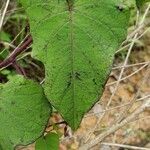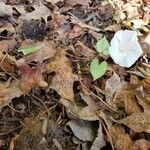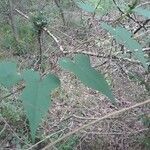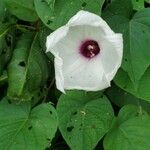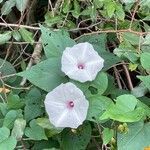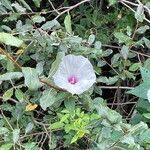A low trailing vine. It grows 1-4 m long. The branched stem is usually purple. It grows from a large, deep tuberous root. The root is slightly milky. The leaves are heart shaped and entire with a pointed tip. They are 3-8 cm long by 1-7 cm wide. The flowers are funnel shaped and white or purple. They are 5-8 cm across. The fruit are capsules 1 cm long. They contain 2 chambers.
